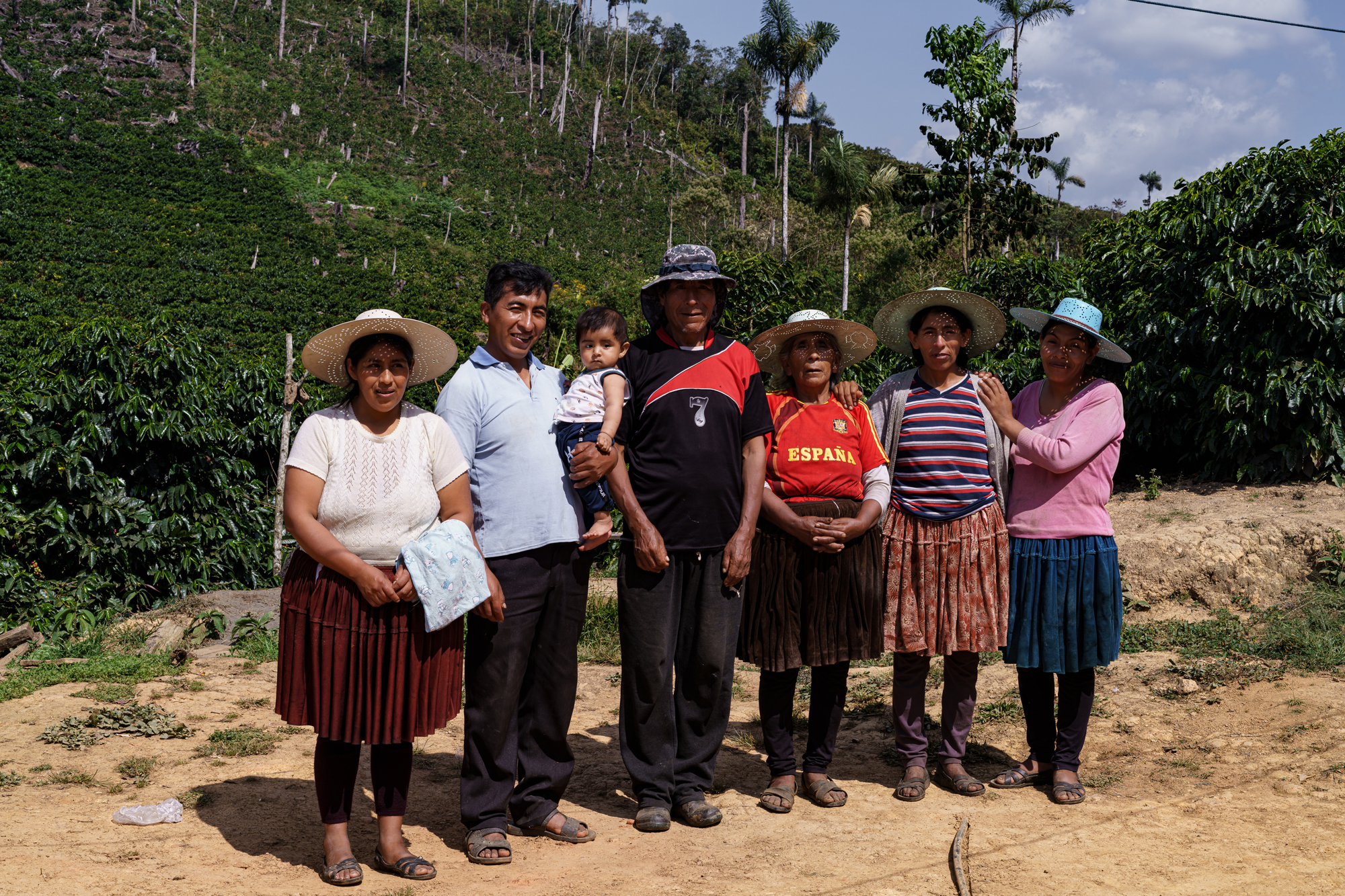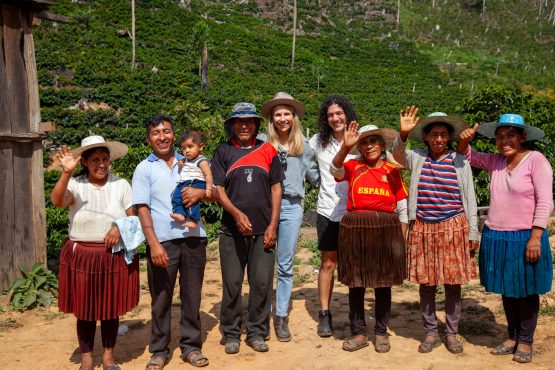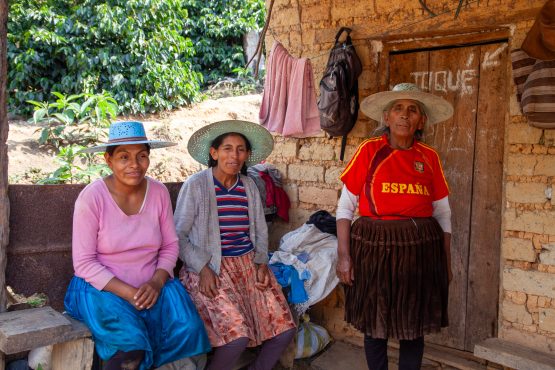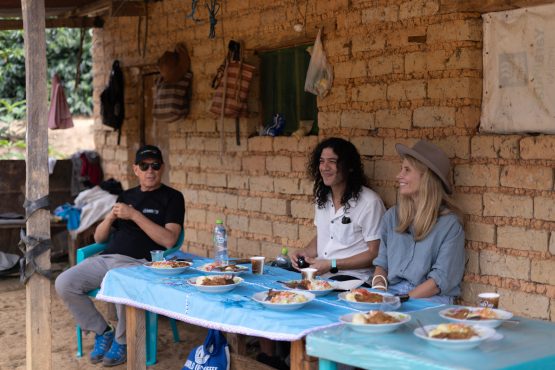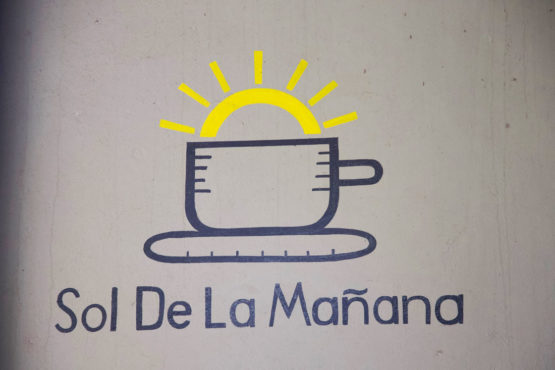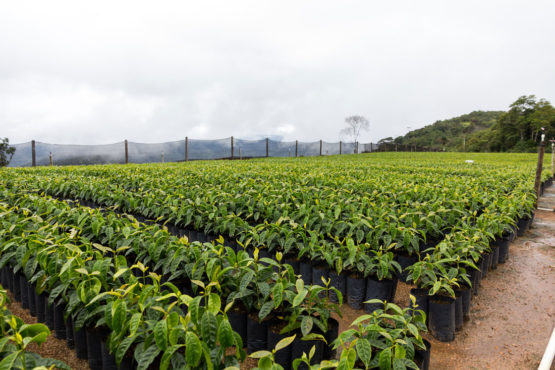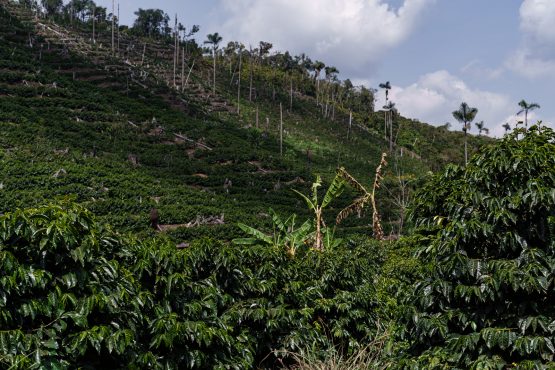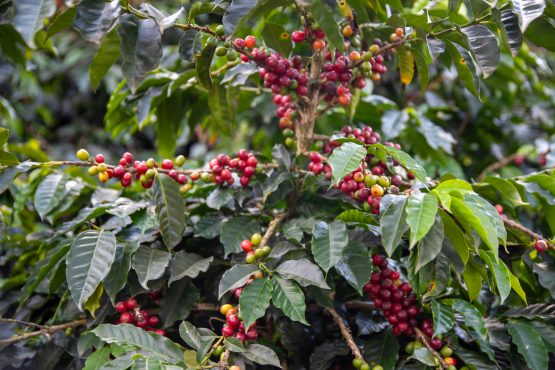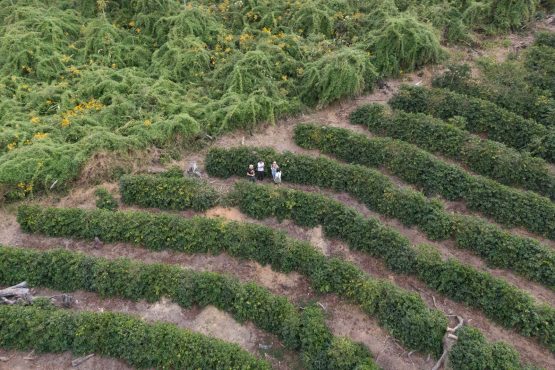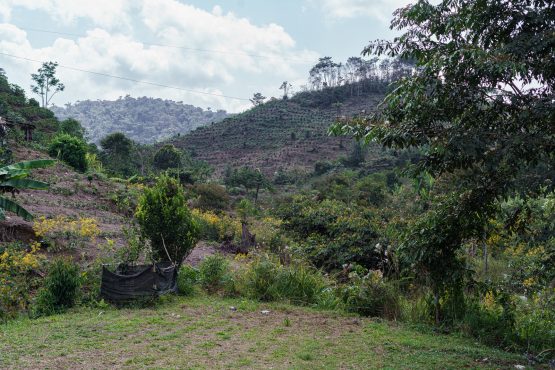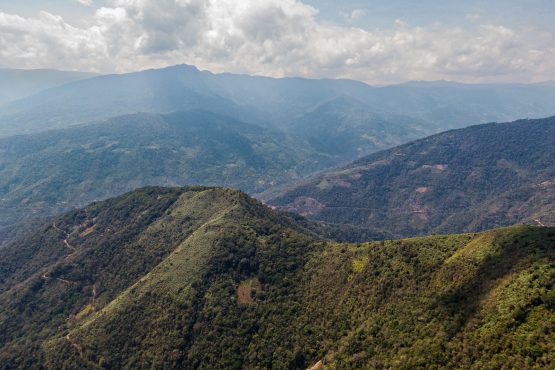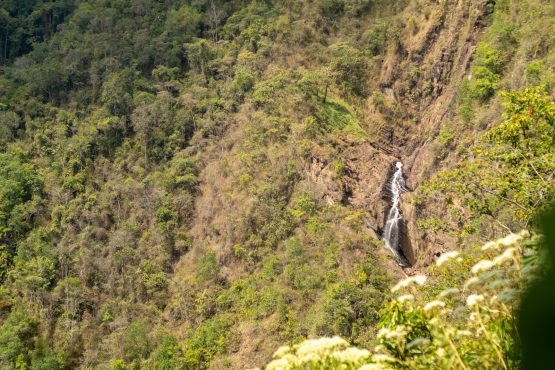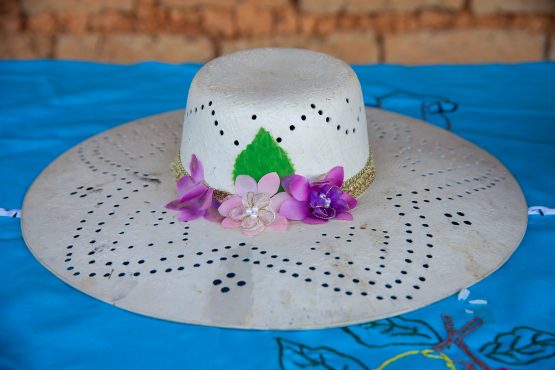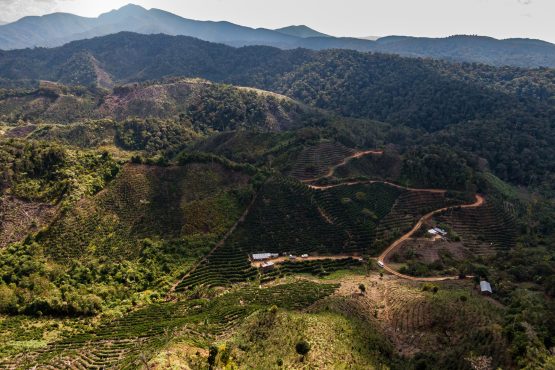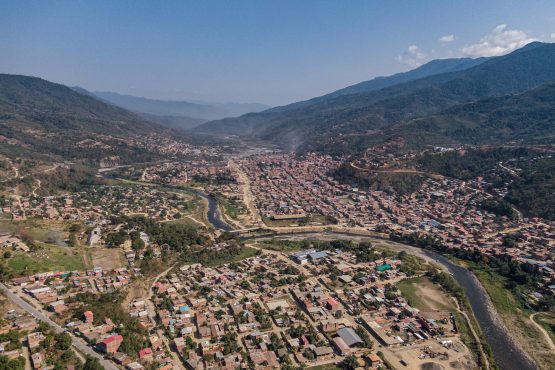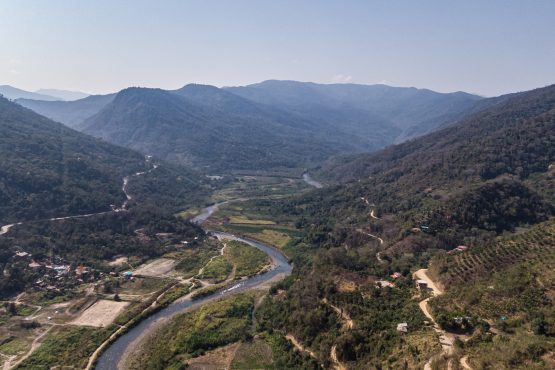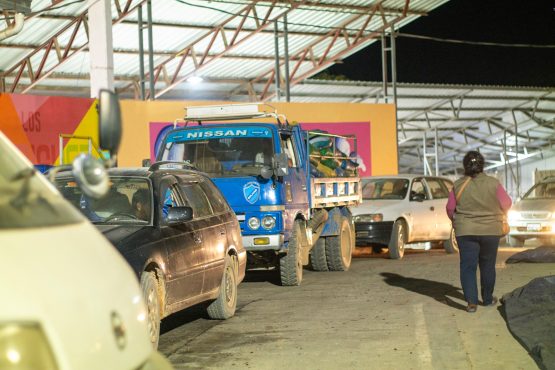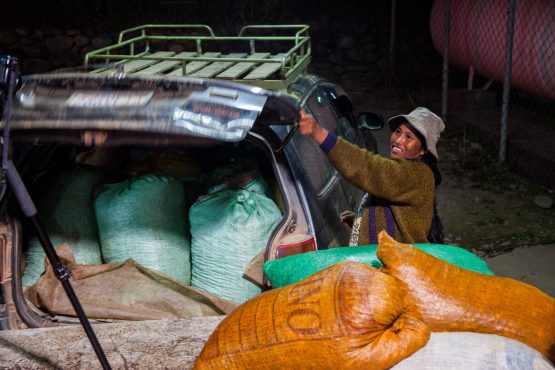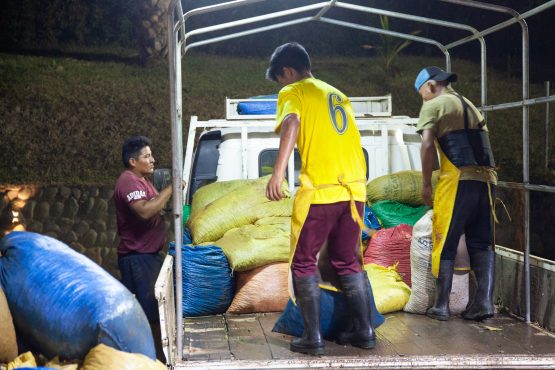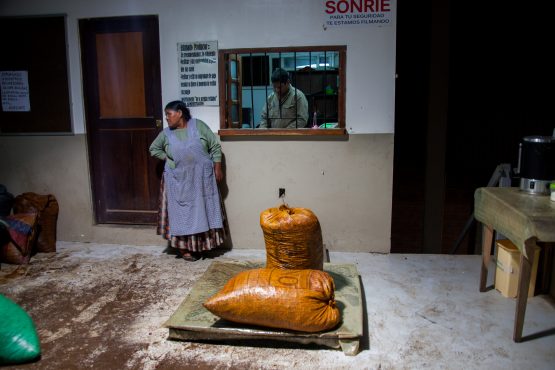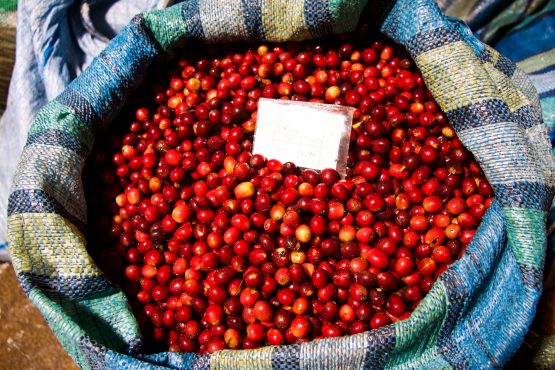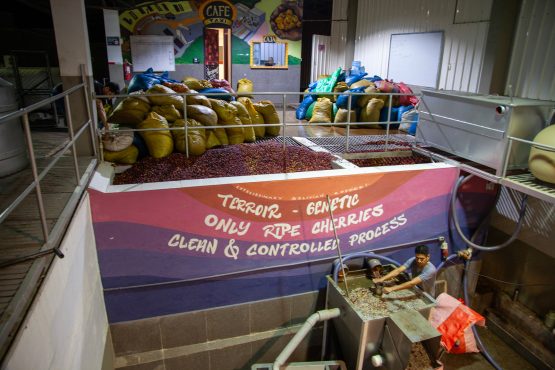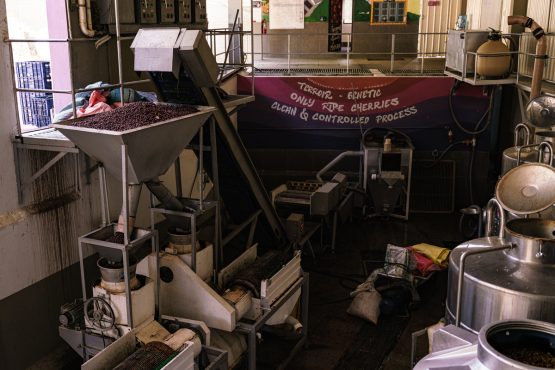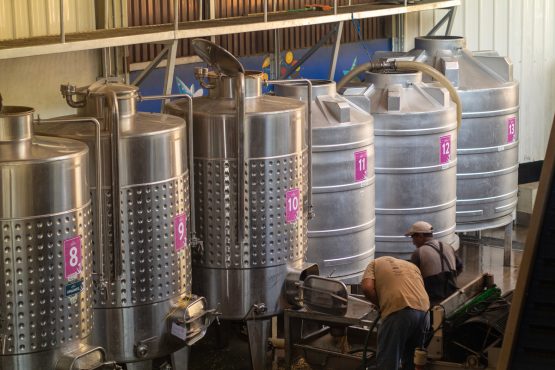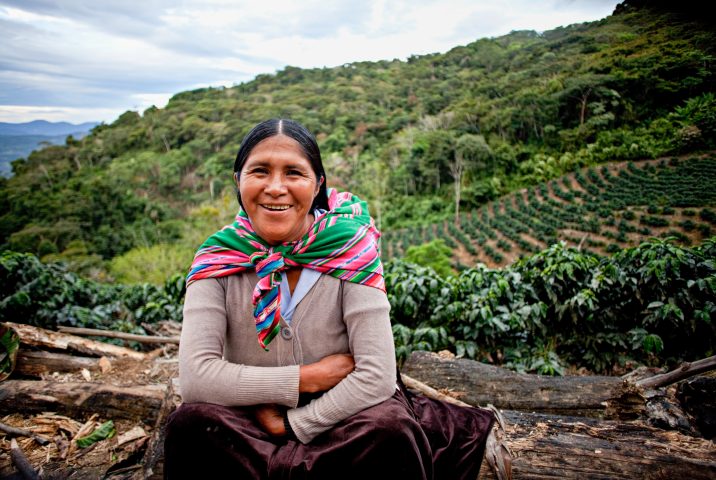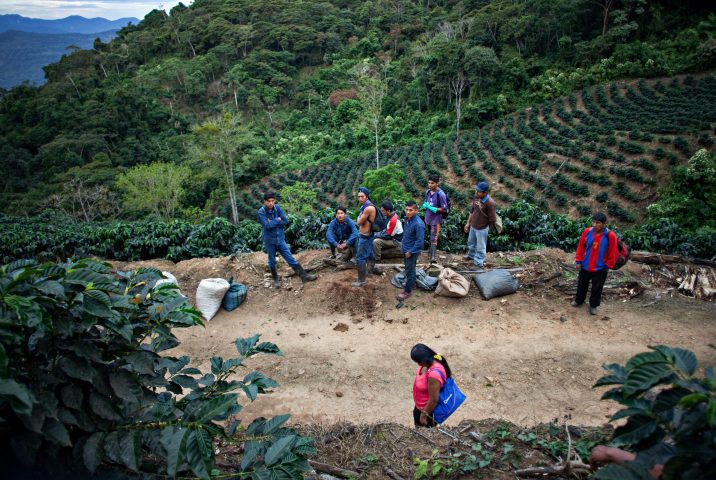Navarro Family
Pink lemonade, grilled pineapple and dark chocolate on the finish. Sweet and well-balanced.
This special microlot was produced by the Navarro family in Taipiplaya, a remote township on the outskirts of the Caranavi province. Caranavi is the epicentre for specialty production in Bolivia, with incredibly high elevations, rich soil, and wide daily temperature ranges providing the perfect conditions to produce exceptional coffee.
While the Navarros are originally from the department of Potosí, in central Bolivia, the family left the region looking for better income opportunities by working in agriculture. While two of the siblings moved to the department of Sucre, and another to Cochabamba, the rest of them moved to Taipiplaya (which is in the department of La Paz) in 2006.
Led by son Víctor, five members of the family have established themselves with neighbouring plots of land in the community of Barrio Nuevo. Parents Don Mariano and Doña Victoria live with Víctor and his family, while his sisters Julia (the eldest) and Cármen live next door, and together they farm four hectares of land. All five Navarros are Adventist Christians (Víctor is the pastor at their local church) and follow a vegetarian diet — which they generously shared with us on our most recent visit, when they invited us over for lunch.
Known as Finca Navarro, the family’s farm is found at 1,600-1,700m above sea level and is made up of Caturra and Catuaí trees. Interestingly, because it sits at sixteen degrees latitude (for reference, most farms in Caranavi sit at fifteen degrees), cherry maturation here is quite slow, leading to more complex sugars and a greater intensity of flavour in the final cup. Up to fifteen seasonal workers help the Navarros during the harvest, though as Víctor exclaimed, “Next year, we’ll need to hire more. It’s going to be a big one!”
When the Navarros first moved to the region, they found some success in growing coca at the nearby community of Vía Imperial. While this was taxing on the soil, it was a profitable venture because it could be harvested three, and sometimes four, times a year. Eventually, the government began to limit coca production in Taipiplaya, making the crop inviable for the Navarros. With the little knowledge of agriculture they had, the family decided to farm coffee instead, following the traditional techniques that were common practice in the region. Unfortunately, this led to a really difficult decade for the family. As Víctor described it on our most recent visit, “I felt like I was in a hole that I couldn’t get out of…”
Finances were challenging, and the Navarros felt they’d have to uproot their lives and relocate again, this time to the department of Cochabamba. What stopped them was their lack of funds to afford the move, and a conversation Víctor had with Pedro Rodríguez about the Sol de la Mañana program. After learning about the initiative, the family decided to give it a chance, even though it entailed a four year committmnent. “If it didn’t work, we were going to have to walk away and leave Taipiplaya,” Víctor recounted.
Luckily, joining Sol de la Mañana was a resounding success for the family. The program initially required many hours of work, because as Víctor pointed out, “[When we first started] I had no idea how to manage a plantation,” yet it completely changed the way the family farmed coffee. Two years into their commitment, the Navarros visited the influential Mamani family in Uchumachi, and set out to replicate everything they saw them doing at their farm.
In time, Sol de la Mañana brought the Navarros the financial stability and prosperity they sought out when they first left Potosí, with their volumes going up by nearly 400% since 2018. “Now, we know coffee very well. I don’t regret joining the program, I’m really grateful to be a part of it and I have given it my all. It has helped the dreams of my parents become a reality, and today we feel very safe growing coffee because we know who will be buying it before the season even ends,” Víctor told us. Finca Navarro is now incredibly healthy, productive and very well-organised, and stands out when viewed from above (as seen in the video below).
Today, Víctor is known around Taipiplaya for his knowledge of coffee, and has become a big proponent of Sol de la Mañana with his neighbours. At town meetings, whenever the subject comes up, Víctor is always happy to share what he has learned, and encourages others to join the program. A couple of years ago, Víctor noticed the school was losing students, and he realised that it was because many local parents were taking their children with them to work, as they had to travel far from Taipiplaya. Concerned this would affect the community’s future, Víctor decided to plant a small plot of coffee outside the school, following the Sol de la Mañana practices he was learning. Once those trees began to bear fruit, and parents noticed how healthy and productive they were, some of them began to take up coffee production in the township again, and the classrooms began to fill back up.
From an initial three, Víctor now gives advice and assistance to a total of ten local families who are following the Sol de la Mañana program. Now that his farm is profitable and incredibly productive, he has been able to invest in a truck, which he uses to deliver coffee cherry to Agricafe’s Buena Vista mill. Because the journey is long and perilous, Víctor has set up a collection point near his property in Barrio Nuevo and makes the journey to the mill on behalf of the township twice a week, as temperatures here allow for cherries to sit in the shade for a few days at a time without being affected. This drive earns Víctor a bit of extra income and ensures his neighbours’ crop is processed in a timely manner.
Head here to learn more about the wonderful Sol de La Mañana program, and here to learn more about the incredible work the Rodríguez family and Agricafe are doing in Bolivia.
ABOUT TAIPIPLAYA
Taipiplaya is a new growing region the Rodríguez family have turned their focus to in recent years. While coffee is not new to Taipiplaya, and Agricafe was already sourcing lots from producers in the region, they’ve only expanded their Sol de la Mañana program here since 2018. The township is difficult to access — the dirt roads that make up most of the three hour drive from Agricafe’s Buena Vista mill are windy and hard to traverse, but Pedro believes the potential for quality and volume found here are hard to match anywhere else in Caranavi.
Taipiplaya’s terroir is exceptionally fertile and healthy because most of the region remains unfarmed and practically untouched. While Agricafe are hoping to establish their own farms in the township, they are already sourcing coffee from some 100 producers in the region, ten of whom are already part of the Sol de la Mañana mentorship program. In total, this volume accounts for nearly a quarter of the total coffee Agricafe process, which they are hoping to grow in the coming years. On our most recent visit, we met several producers who had recently enrolled in Sol de la Mañana, whose coffee we hope to source once their trees have matured and their production is big enough.
Taipiplaya is home to some 200 Quechua families, many of whom originally immigrated from other departments in central and southern Bolivia to make a living out of agriculture. The cultural difference between the Aymara and Quechua communities who populate Caranavi is marked, with Quechua women being well-known for their round, wide-brim hats, while Aymara women tend to wear long, colourful skirts.
ABOUT CARANAVI
The inhabitants of Caranavi first started farming coffee in the 1950s, when a government-led agrarian reform resulted in small parcels of land (of around 10 hectares in size each) being redistributed back to thousands of largely Aymara families. The Aymara are one of Bolivia’s 36 indigenous nations, who originally lived on the highlands of the Altiplano (a vast plateau of the central Andes that stretches from southern Peru to Bolivia and into northern Chile and Argentina), in Bolivia’s north. Along with the Quechuas, who lived in the Bolivian lowlands, both groups immigrated to Caranavi to work in agriculture.
The municipality is located in the Yungas ecoregion, one of South America’s most fertile and diverse locations. The region runs along both sides of the Andes Mountains, and is known for the world’s highest lake, called Titicaca. In the Quechua language, Yungas translates to “the warm lands,” in reference to the rainy, yet warm climate experienced in the region.
HOW THIS COFFEE WAS PROCESSED
This particular lot from the Navarro family was carefully hand-picked and processed on the same day at the Buena Vista washing station. This meticulously run mill is owned by Agricafe, who painstakingly process each of the exceptional specialty lots they receive separately to allow for full traceability back to the individual farmer or settlement.
Agricafe draw a lot of inspiration from the wine industry in their approach to coffee production, and are always innovating and trialling different processing techniques at Buena Vista. This coffee was processed with experimental techniques, part of the Rodriguez family’s long term strategy to achieve the greatest distinction and diversity in their special lots. Watch the video below to see how the Navarros’ coffee was processed:
Evenings at the mill are always bustling as arrivals of fresh cherries begin in the late afternoon, after the day’s picking, and continue long into the night. It is widely known around Caranavi that only perfectly ripe cherries will be accepted by Buena Vista and all lots are inspected on arrival prior to processing. In an arrangement somewhat unique to the area, many farmers use taxis to deliver coffee, and by 7 pm a long line of taxis forms along the road leading to the mill.
After being inspected and weighed, the coffee cherry was carefully sorted by weight using water, and floaters were removed. Following this, the coffee was placed a conveyor belt and disinfected, in a similar process used for wine grapes, and was then pulped mechanically. For this lot, onsite oenologist Iván Hugas prepared a solution (which the Rodríguez family call coffee ‘mosto’) with a carefully calculated level of the harvested bacteria or yeasts, and added it to the wet parchment as it was placed in sealed stainless steel tanks, catalysing a controlled fermentation.
The tanks were closely monitored throughout the ferment process and the coffee was removed after 72 hours, when the desired fermentation was complete. The wet parchment was then washed with fresh, clean water and carefully machine-dried using a ‘guardiola,’ a horizontal, rotating drum that gets rid of moisture by creating a warm, consistent flow of air around the coffee.
Once the coffee was dry, it was transported to La Paz where it was rested before being milled at Agricafe’s dry mill, La Luna. At this state-of-the-art mill, the coffee was first hulled and sorted using machinery, and then by a team of workers who meticulously sorted the coffee again (this time by hand) under UV and natural light. The mill is one of the cleanest and most impressive we have seen – you can read more about it here.
